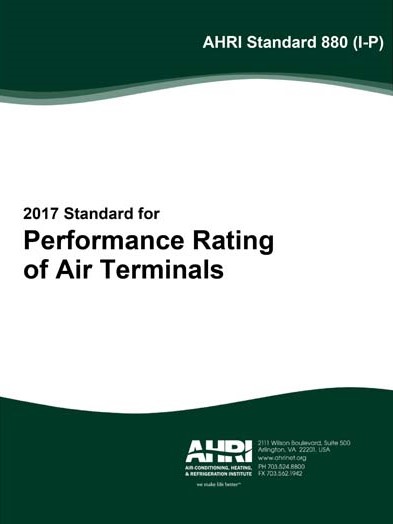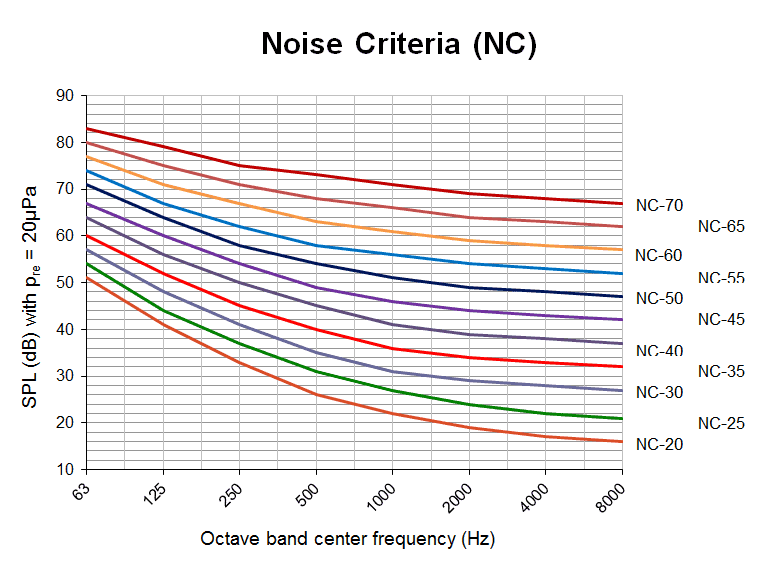A Look at These Standards and How They Impact Terminal Unit Acoustics
Sound-power and sound-pressure levels are used to catalog acoustical performance for terminal units. The sound performance of a terminal unit is crucial when considering the comfort of occupants within a space. For example, some places have an open-ceiling design and are well suited to quiet units to minimize distracting noises.
 |
| Knowing the sound performance of terminal units is essential for creating a comfortable indoor environment, especially in sound-sensitive spaces such as classrooms |
Although sound power and sound pressure are commonly confused as being the same thing, they are quite different and are certified by two different standards from the Air-Conditioning, Heating & Refrigeration Institute. AHRI Standard 880 for Performance Rating of Air Terminals is used as a certified rating for sound power and details certification requirements. AHRI Standard 885 for Procedure for Estimating Occupied Space Sound Levels in the Application of Air Terminals and Air Outlets uses AHRI 880 sound-power levels to estimate sound-pressure levels of a unit (measured in noise criteria, or NC, values) based on its application.
 |
 |
|
| The AHRI 880 and 885 testing standards are available online from the Air-Conditioning, Heating & Refrigeration Institute | ||
AHRI 880 and Sound Power
Sound power can be described as the rate at which acoustical energy is emitted from a source. According to AHRI 880, sound-power levels shall be determined for the octave bands from 125 to 4,000 Hertz (Hz) according to ANSI/AHRI Standard 220 for Reverberation Room Qualification and Testing Procedures for Determining Sound Power of HVAC Equipment. AHRI 880 considers only octave bands 2 through 7, which cover an array of frequencies that are within the measurable standards. Octave band 2 starts with the center frequency of 125 Hz and doubles every octave after, up to 4,000 Hz. Using certain testing parameters set by ANSI/ASHRAE Standard 130 – Laboratory Methods of Testing Air Terminal Units, the sound-power level at each octave can be calculated and documented for different terminal units and configurations.
 |
| Sound-power octave bands and center frequencies |
AHRI 885 and Sound Pressure
AHRI 885 works hand in hand with the data collected from AHRI 880, using the measured sound-power levels as inputs to estimate noise criteria values. According to AHRI 885, noise criteria are standard curves used to describe a spectrum of measured sound-pressure levels with a single number. A simple way to understand NC values is to look at it as a single-number rating that describes how we perceive noise. Sound pressure can be described as the change in pressure due to a sound wave. The change in pressure is what allows us to hear.
To estimate NC, certain sound-performance deductions need to be generated. These deductions come from a variety of parameters based on assumptions including duct lining, room attenuation and sound-power division. Once the deductions are totaled, they are then applied to the generated AHRI 880 sound power. The updated sound powers can then be plotted per octave on an NC curve, and the highest NC value across the plotted data points can be used to dictate the sound pressure.
It is difficult to calculate and estimate the exact NC values of a specific unit without having the unit tested in a true environment. However, NC values are an industry standard that are typically generated to compare general sound performance data across different brands and manufacturers.
 |
| NC graph used to generate sound NC values and sound pressure |
AHRI 880 works in tandem with AHRI 885 to calculate and generate performance based on environmental factors that impact acoustical performance. By following these standards, certain NC requirements can be selected for specific environments – a school classroom, for instance, has a recommended NC value of 25–30 based on AHRI 885. Price Industries’ All-In-One engineering software has built-in sound performance that can be customized and generated using these AHRI standards; visit our website to learn more and to download the software.
For more information about AHRI 880 and AHRI 885 and how they impact terminal unit acoustics, contact the Terminals team at airmovement@priceindustries.com.



